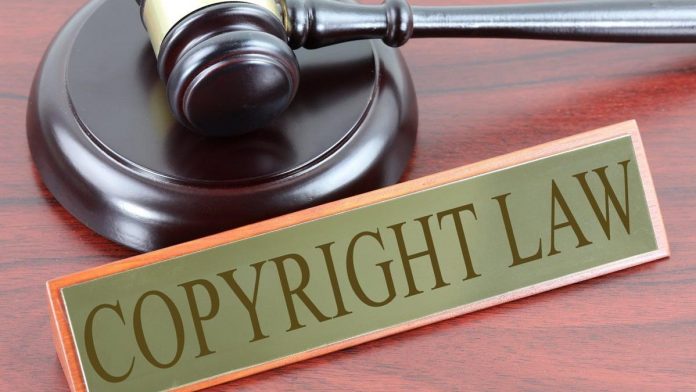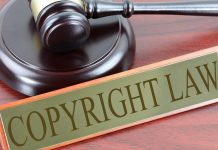This article is written by J Jerusha Melanie, a student of SRM School of Law, Tamil Nadu. This article seeks to explain various aspects of copyright disclaimers, including their pros and cons, and the way to draft a more convincing copyright disclaimer.
This article has been published by Sneha Mahawar.
Table of Contents
Introduction
Have you ever noticed the statement “no copyright infringement intended” in the description boxes of various YouTube videos? The statement is technically called a ‘copyright disclaimer.’ Have you ever wondered the reason behind YouTubers’ mentioning it? Do you think the disclaimer protects their content from being struck as a copyright infringement?
In this article, let us try to answer these questions by understanding the concept of copyright disclaimers under the copyright law in the United States of America (Copyright Act, 1976.)
What is a copyright disclaimer
A copyright disclaimer is the declaration of any person using a copyrighted work in the form of reproduction, thereby affirming that the reproduction is legally protected under Section 107 of the United States Copyright Act, 1976 (the Act). It also includes the relevant details of the source (copyrighted work) of content used in such reproduction.
The very purpose of adding a copyright disclaimer to any reproduction is to send a message to the readers or viewers that the reproduction does not infringe the copyright of the original work.
It is usually seen in websites, downloadable files, blogs, videos, etc.
Types of copyright disclaimers
Following are the types of copyright disclaimers:
- Warranty copyright disclaimer,
- Confidentiality copyright disclaimer,
- Investment copyright disclaimer,
- Views-expressed copyright disclaimer,
- No-responsibility copyright disclaimer and
- Fair use copyright disclaimer.
However, in this article, we will exclusively deal with fair use copyright disclaimers.
Requirements for copyright disclaimers
It is pertinent to note that copyright disclaimers are used only when a copyrighted work is reproduced. In the first place, any work is given copyright only if it satisfies the following requirements:
Expression: Mere ideas cannot be copyrighted.
Fixation: The ideas expressed/ fixed in the form of any tangible medium can only be copyrighted.
Uniqueness: A work must contain a substantial amount of creativity to be eligible for copyright. Furthermore, mere facts, small phrases, etc., are not copyrightable.
Section 107 of the US Copyright Act, 1976
The Act, which was adopted into law as Title 17 of the United States Code, is the prime copyright statute in the United States (the US). Its final version was adopted into the US Code on October 19, 1976. It has 15 Chapters and 20 Appendices. The Act protects authors’ literary, musical, dramatic, choreographic, pictorial, graphic, sculptural, audiovisual, and architectural works. Under Section 102 of the Act, the work should be original and fixed to a tangible medium to avail copyright protection. However, the Act does not protect any idea, procedure, process, system, type of operation, concept, principle, or discovery, no matter in what way it is described, explained, illustrated, or embodied in a copyrighted work.
Section 107 of the Act falls under Chapter 1 and is titled ‘Limitations on exclusive rights: Fair Use.’ As the title suggests, Section 107 provides the scenarios when using a copyright owner’s exclusive rights by another person without the copyright owner’s permission will not be treated as an infringement. It means that Section 107 is an exception to the exclusiveness of the copyright owner’s rights. It deals with the concept of ‘fair use’ of copyrights in the US.
Section 107 states that reproducing copyrighted works in the form of copies, phonorecords, or any other means for fair use does not amount to an infringement of copyrights, provided the usage was exclusively for one of the purposes stated under the Section.
The following is the list of purposes that fall under the ambit of fair use:
- Criticism,
- Comment,
- News reporting,
- Teaching,
- Scholarship, and
- Research.
The doctrine of fair use in the US
The doctrine of fair use was a common-law doctrine until it was adopted into the Act. The doctrine protects the reproduction of any copyrighted work; otherwise, it is an infringement of copyright. The very purpose of the doctrine is to balance the interests of the copyright holders with the needs of society. It justifies certain copyright-infringing actions as they cater to the needs and creativity of society.
In the US, the doctrine was originally created as the doctrine of ‘Fairness Abridgement’ in the case of Gyles v. Wilcox [(1740) 26 ER 489]. It was later acknowledged by Justice Story in the case Folsom v. Marsh [(1841) 9. F.Cas. 342]. The verbatim appropriation of letters by President George Washington in his biography was challenged as copyright infringement in this case. Justice Story attempted to formulate a test to draw a thin line between copyright infringement and its permissible unauthorized uses. The test that he formulated was based on the question of whether or not the reproduced work replaced/ substituted the original copyrighted work in the market. He stated that if the reproduced work was intended to directly compete with the copyrighted work, then it amounted to copyright infringement.
The adoption of the Act in 1976 opened new avenues for the doctrine of fair use in the US. The Act introduced the ‘four-factors test’ to determine the extent of application of the doctrine. Though Section 107 of the Act attempts to clarify the grounds on which a reproduced work can be protected under the ambit of fair use, it leaves an ample amount of room for the US courts to determine whether or not to protect a reproduction under the wings of fair use. So the power interprets the concept of fair use on a case-to-case basis still remains with the US judges.
The ‘four-factors test’ to determine fair use under Section 107
Section 107 of the Act further provides the following four factors to determine whether or not unauthorized reproduction falls under the protective ambit of fair use. The factors are:
Purpose and character of the reproduction
The purpose for which the reproducer has used the copyrighted work plays a massive role in determining whether or not it can be protected under Section 107. Works reproduced for purposes like research, criticism, teaching, etc. have higher chances of winning a copyright infringement suit, as such purposes cater to the needs of the majority of society.
Money is another aspect that strongly determines the protection under Section 107. Reproduced works that derive monetary benefits are much more likely to be not considered fair use.
Nature of the copyrighted work
The nature of the copyrighted work is another factor that influences the courts’ decisions on determining fair use. For instance, the reproduction of a non-fictional copyrighted work has a higher chance of getting protection under Section 107 than a fictional copyrighted work. This is because non-fictional works generally comprise facts and involve comparatively less creativity than fictional works. It is the same reason why news reporting is one of the purposes for which Section 107 permits fair use.
Ratio between the reproduction and the copyrighted work used in it
Using a small part of a copyrighted work to make a new work may be okay. But, what if the ratio between the copyrighted work and the reproduced work is 60:40? In such a case, it is obvious that the courts will favour the copyrighted work. The Act protects the exclusive rights of the copyright owner; it doesn’t allow anyone to misuse such rights in the name of fair use. Any reproduced work majorly containing copyrighted materials or is entirely based on it does not qualify for the protection under Section 107. Simply put, the more the quantum of copyright work is used in reproduction, the lesser the chance of winning the protection of fair use.
However, there is no concrete yardstick to determine how much copying is safe enough to remain protected under the wings of Section 107. It depends on the decisions of the courts, which vary from case to case.
The value of a copyrighted work
As aforementioned, the Act prioritises the rights of the copyright owner over fair use. Deriving monetary benefits from the copyrighted work is one of the prime rights of the copyright owner. So, the impact of the reproduction on the market or the value of the copyrighted work plays a key role in determining whether the reproduction is protected under Section 107. For instance, if the reproduction is not attracting the customers of the copyright owner to a significant extent, then the reproduction may get the protection of fair use.
Features of a copyright disclaimer
As aforementioned, a copyright disclaimer is merely a statement intending to indicate that though some parts of a copyrighted work are used in it, the reproduction is used for fair purposes. However, it is extremely pertinent to know the following key features of copyright disclaimers under Section 107:
- Merely adding a copyright disclaimer to a reproduced work does not make it completely immune against a claim of copyright infringement. A copyright disclaimer does not prevent the author of the copyrighted work from filing a suit for copyright infringement.
- Most copyright disclaimers have no substantial legal support.
- Only the courts can determine whether or not a reproduced work is a subject of fair use under Section 107. It is the court that interprets the grounds provided under Section 107 for availing the protection of fair use.
Advantages of using a copyright disclaimer
The following are the benefits of adding a copyright disclaimer under Section 107 to any reproduced work:
- It showcases the reproducer’s legal awareness to the readers or viewers of the reproduced work. It projects the reproducer as a credible source of information;
- It acts as a way for the readers or viewers of any reproduced work to know the source of information based on which the reproduction is made;
- It establishes the claim of ‘fair use’ under Section 107 even before a case of copyright infringement reaches the court so that it is less difficult to legally prove the bona fide intention, and
- It provides a space for the reproducer to give due credit to the copyright owner, thereby respecting his paternity right (the right of a copyright owner to claim credits for his work).
Disadvantages of using a copyright disclaimer
Adding a copyright disclaimer is more disadvantageous than advantageous. This is because a copyright disclaimer is not a legal device supporting the contention that the reproduced work is protected under Section 107. It is not sanctioned by any court. In fact, only after a legal copyright infringement suit can it be determined whether or not it is fair use. Just because the reproducer says the activity is covered under Section 107, gives credit to the original copyright owner, or adds a copyright disclaimer, does not mean it is fair use. So, a copyright disclaimer does not legally deter the copyright owner from filing a suit for copyright infringement.
At times, a copyright disclaimer may prove to be the worst mistake that a reproducer can make. It is because the copyright disclaimer publicly proclaims the fact that the contents in the reproduced work were copied from a copyrighted work.
Also, there is no graver way for the reproducer to admit before the court the fact that he committed copyright infringement than by adding a copyright disclaimer. The disclaimer is literally equivalent to the reproducer shouting to the copyright owner, “Hello, I have copied the contents of your copyrighted work without your permission. I copied it, knowing that it was a copyrighted work. I know it is an infringement of your rights, but it was not intended. It is protected under Section 107.” The disclaimer can be used against the reproducer. It acts as evidence proving that the reproducer knew about the existence of the copyright. The evidence of this knowledge may lead to the reproducer losing a legal copyright infringement battle.
How to write a copyright disclaimer
One should be very cautious while writing a fair use copyright disclaimer. It is because of the very fact that copying the contents of a copyrighted work is legally wrong in the first place; however, through the disclaimer, the reproducer simply tries to justify his wrong. So, if you are a reproducer, try to make the justification convincing enough to deter the copyright owner from filing a copyright infringement suit.
To avoid spending on copyright infringement battles, it is best to not use any copyrighted work for creating new content unless you understand the concept of Section 107 well and use it for a fair purpose.
Nevertheless, if you are sure that your reproduction qualifies for the protection under Section 107, make sure to write a well-convincing copyright disclaimer justifying it. Using simple phrases like ‘no copyright infringement intended’ does not serve the purpose at all. Consider the following points as steps for writing your copyright disclaimer:
Step 1- Admit the facts
Beginning the disclaimer by stating the fact that your work contains certain copyrighted materials, and that the user is unauthorized by the copyright owner is one of the best ways to frankly admit what you have done.
Step 2- Describe the copyright owner
Provide a detailed description of the copyrighted works that you have used. It should include the name of the copyright owner and the exact description of his work that you have copied in your reproduction. You may also specify the exact quantum of the copyrighted work that you have used.
Step 3- Elucidate the purpose
The next point to specify in the disclaimer is the exact purpose of using the copyrighted work. This is the part that makes or breaks your attempt to convince the copyright owner. Make sure to clearly elucidate it in the best possible way to make it fit into one of the fair purposes provided under Section 107. Explain how the copied copyrighted materials in the reproduced work are beneficial to society as a whole. If you are using it for a non-profit purpose, it is always good to emphasise the fact to gain the original copyright owner’s confidence.
Step 4- Cite the law
Next, proceed by stating that since you have used the copyrighted work for a fair purpose, it is protected under Section 107 of the Act.
Step 5- Add a fair use notice
Lastly, conclude your copyright disclaimer by providing a ‘fair use notice.’ A fair use notice informs the readers or viewers of the reproduced work that though you have used the copyrighted materials for fair use, anybody who wishes to use such materials for any purpose other than the ones mentioned under Section 107 must get the permission of the copyright owner.
Please note that the above-mentioned steps are merely suggestive. You may add the points that you feel will substantiate your ‘fair use’ claim.
Sample copyright disclaimer
The following is a sample copyright disclaimer:
This site contains some copyrighted materials whose use has not been specifically authorized by the copyright owner.
….Organisation is making the contents in this site available for the advancement of …. We believe that this constitutes a ‘fair use’ of the copyrighted materials as provided under Section 107 of the United States Copyright, 1976.
For the usage of the copyrighted materials contained in this site for any purposes that go beyond ‘fair use’, the user must obtain prior permission from the copyright owner.
If you believe that any content on this site violates your intellectual property or other rights, please notify us by emailing to ….com.
Please note: The above-provided is a basic sample of a copyright disclaimer. It is always advised to seek legal assistance for drafting such disclaimers.
Conclusion
A fair use copyright disclaimer is the declaration of any reproducer who uses any copyrighted materials to create new content without the permission of the copyright owner. The truth is that using copyrighted works without the owner’s permission is legally punishable. So, adding a copyright disclaimer does no real good for the reproducer.
So, as much as possible, content creators must stay away from doing so. Nevertheless, if it is extremely necessary to use copyrighted materials, the best and safest way is to find out the owner (or concerned agency) and legally request permission. Once the approval is granted, the copyrighted materials can be used as per the terms and conditions of the agreement. The process may be a bit time-consuming. However, it will help you save the time and money wasted in legal battles.
Frequently Asked Questions (FAQs)
- Should a copyright disclaimer be notarized?
No, a copyright disclaimer need not be notarized. It is enough to simply display it in a place accessible by the readers or viewers.
- Is a copyright disclaimer the same as terms and conditions?
No, a copyright disclaimer is different from terms and conditions. While the former is an affirmation addressing the legal liability that may arise from copying any copyrighted material, terms and conditions elucidate the rules for using the content created by the content creator.
References
- Copyright Law of the United States and Related Laws Contained in Title 17 of the United States Code – May 2021 (Circular 92)
- “Fair Use” under U.S. Copyright Law – IPRinfo
- Doctrine of Fair Use and Fair Dealing – Intellectual Property Right Laws | Law column
- The #1 disclaimer you should never use: “No Copyright Infringement Intended” | by Margery Marvelous Alexis, M.S. | Medium
Students of Lawsikho courses regularly produce writing assignments and work on practical exercises as a part of their coursework and develop themselves in real-life practical skills.
LawSikho has created a telegram group for exchanging legal knowledge, referrals, and various opportunities. You can click on this link and join:
Follow us on Instagram and subscribe to our YouTube channel for more amazing legal content.













